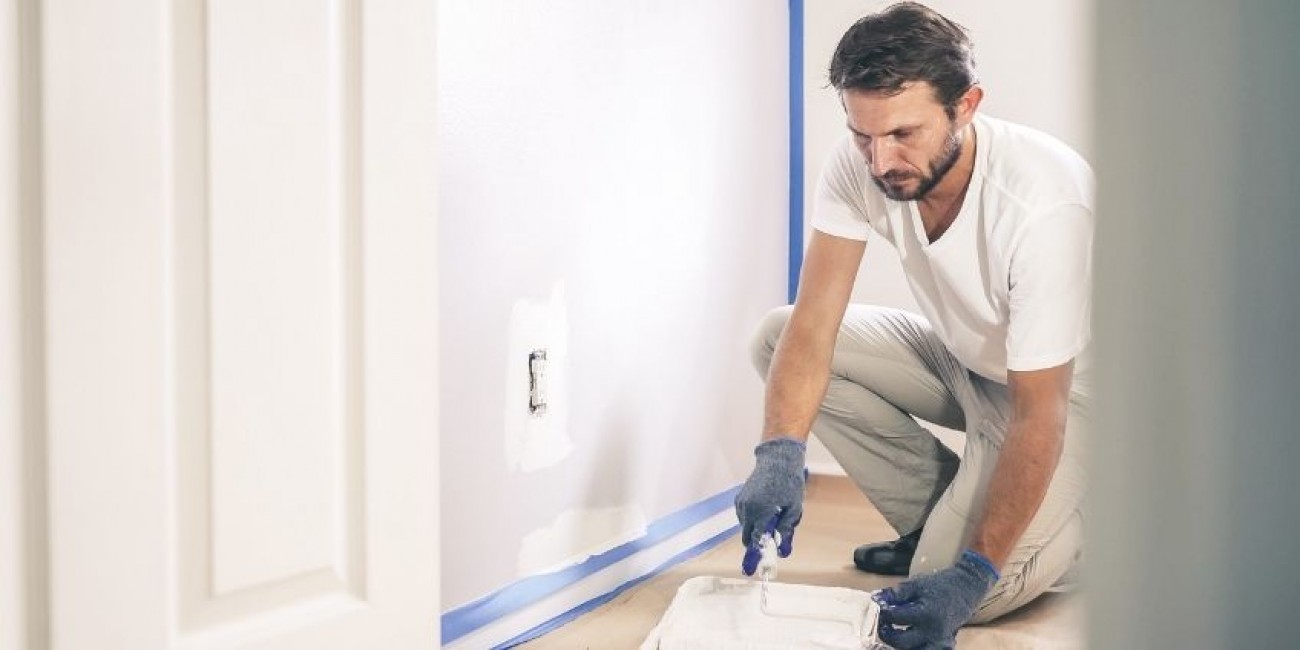Essential Tools You Need To Paint Your Room

When planning to paint a room, we often spend a lot of time picking out the perfect color and finish. However, the essential tools you need to paint your room go beyond the paint itself. Since renovations can’t happen without them, it’s good to spend a little time focusing on your tools as well.
Drop Cloth
Drop cloths cover both the floor and furniture in a space. However, many drop cloths can still stain the floor below, so you’ll need to pick the right one for the job. For the floors, a canvas cloth backed with plastic will be most effective. The canvas absorbs the paint while the plastic keeps the paint-heavy canvas from staining the floor beneath. Resist the urge to buy a purely plastic drop cloth for the floors—although they’re cheaper, they will become a slick tripping hazard. They will, however, work well for covering furniture.
Brushes
Brushes are, quite possibly, the most essential tool for painting your room other than the paint itself, so you will want to use strategy when selecting them. Different types of brushes work better with different types of paints. For instance, if you use oil-based paints, a natural, animal hair bristle brush may work best. For water-based paints, synthetic brush hairs work better because they don’t absorb as much paint.
If you are painting a large space, you will likely need both paintbrushes and rollers for the most precise, even paint job. Use the paintbrushes for the edges and trim and the rollers for the center of the walls. Or, consider using an airless sprayer for a professional finish.
Painter’s Tape
Painter’s tape is the difference between a professional and amateur-looking paint job. It keeps your trim and the lines where the wall meets the ceiling straight and clean. What sets it apart from other types of tape is its design. Painter’s tape will adhere to the wall without bubbling up or leaving gaps that paint can bleed through. The adhesive also lifts more easily, meaning it won’t take pieces of wall paint up with it.
Stepladder
Even if you’re tall, a stepladder is still helpful for reaching the tops of the walls. Being able to see where you are painting at eye level will reduce the risk of slip-ups. A stepladder is always a safer choice than standing on a chair or a table since they usually have grips on every step to prevent falling and are less likely to tip over than a furniture piece.
ECOS Paints wants to help you achieve the perfect paint job. Once you’ve assembled the rest of your tools, we can supply you with the perfect zero-VOC* paint for your project.
*Zero VOC - Conforms to CDPH 01350 (VOC emissions test taken at 11, 12, & 14 days for classroom and office use).


























